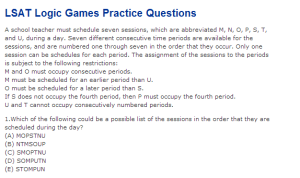Ah. Deleuze and Guattari. The undoers. Undoing theory trees and dichotomous binaries everyone. Tearing apart psychoanalysis, parental hegemony, and enlightenment ethos. Laughing in the face of neatly mapped neuronal networks. Scoffing at the idea of traces as containing anything more than a fleeting moment, tracing instead anything but “meaning”. What do they offer instead? The “bible of the American dentist”, Amsterdam, a fetish with canals, in-betweens, constant change, the Kerouackian elusive search for “it”, a disdain for copses and groves of all sorts, and a predilection for “grass” and “weed”, traveling rhizomatically all across this land. Here are our intrepid superheroes, opening minds and freeing us from binary fallacies and obfuscating certainties everywhere:
Rather than a neat, western Enlightenment flow chart of activity, D-Money and G-Spot offer an “acentered system” in which “communication runs from any neighbor to any another, the stems or channels do not preexist, and all individuals are interchangeable, defined only by their state at a given moment — such that the local operations are coordinated and the final, global result synchronized without a central agency” (17). Put that in your Organizational Management pipe and smoke it! Such a “machinic multiplicity, assemblage, or society rejects any centralizing or unifying automaton as an “asocial intrusion” (17), so take your hegemonic patriarchy with you when you leave this mythical place where it doesn’t exist. Dolce & Gabbana go on to quickly remind us that such an egalitarian ethos is certainly not Western and definitively not American, in love as we are with our phalluses, trees, and generals (a “schema of aborescence corresponding to preestablished, arborified, and rooted classes” 19). However, our intrepid theorists remind us quickly that despite such codified systems of hierarchy, bureaucracy and centralized control, even in America a rhizomatic structure exists as an undercurrent, flowing underground …. which, gets transformed and appropriated and taken up by the system to create a neocapitalism which … brings us to an impasse. Uh-oh. If we have set up a binary between roots and rhizomes, then we have joined the arborescent structures we purport to dismiss. Shoot. Time for an interlude by The Talking Heads (they get it, man)
See. Life happens. Not like how you planned. And the water flows underground. Same as it ever was. Same as it will be.

Cover of original publication of Jack Kerouac’s The Golden Eternity, 1960. The ostensible Japanese Sumi-e looks suspiciously like a rhizome.
Now, it’s time for a quiz! Which of the following is Catholic-Buddhist, East-West spanning Jack Kerouac, and which is D&G?:
“When you’ve understood this scripture, throw it away. If you cant understand this scripture, throw it away. I insist on your freedom.”
“The problem of writing: in order to designate something exactly, anexact expressions are utterly unavoidable. … Arrive at the magic formula we all seek — PLURALISM=MONISM — via all the dualism that are the enemy, an entirely necessary enemy, the furniture we are forever rearranging” (21).
OR
A. “This world is the movie of what everything is, it is one movie, made of the same stuff throughout, belonging to nobody, which is what everything is.”
B. “there is no dualism, no ontological dualism between here and there, no axiological dualism between good and bad, no blend or American synthesis. There are knots of arborescence in rhizomes, and rhizomatic offshoots in roots” (20).
Shoot. Yes. Offshoot. Go with it. First thought, best thought. It’s jazz. Play it and the notes become zen, baby. Blow, man, blow! Follow it to your solo. I can dig it. You’re a hepcat, man.
Beyond the abstraction that is Deleuze & Guattari, Scott demonstrates how one can concretely and mathematically map such rhizomatic growth which epitomizes modern social networking. By flattening the hierarchical structures, as Latour, Castells, and Deleuze & Guattari note in various ways, there are no longer single structures, or even a “root” for a binary decision tree. Networking becomes more about multiple entry and exit points, a system of redundancy, and a way of anticipating user behavior, while simultaneously recognizing (and expecting) a variety of “user modifications” that augment or thwart these expectations. I think what I like about Scott is that he recognizes that the patterns do not exist in some sort of pure form waiting to be discovered and then “understood” or replicated. This is what bothered me about activity theory and CHAT. It seemed to thwart the post-modern notion of the absence of an underlying “truth” and instead search for it, Bitzer-like. If it didn’t exist, they would create it through the flow chart of “ideal” behavior, and assume it could be replicated or made even better through the intervention of rhetor-designer. I chafed against this notion for several reasons: 1. because I’m not sure such a convergent solution is either real or even desired and 2. because I am cynical about the profiteering and exploitation that can be achieved through “optimization” and homogenization. I believe strongly in equifinality: more than one way to get to the solution. I think this is why I never applied activity theory to larping, as I found the fundamental idea of trying to map a constantly changing system to be difficult, if not ludicrous.
Scott’s methods do not assume an underlying “optimal” network shape or user behavior. They recognize, as do D&G, that these networks grow rhizomatically, and loop back on themselves, moving in fits and starts, with periods of growth and dormancy, with nubs that took off in one direction then abruptly stopped, only to start again in a tenuous new direction. The resultant map is not a pure demonstration of what could/should be done, when done “right” or “well” or “efficiently”, but simply what was done. It recognizes that the map itself is a past representation, and limits what generalizations can be done from looking at it. Playing with Scott reminded me of playing with the logic problems from the old GRE and LSAT, which used to occupy me for hours  (and still do, sometimes, especially as a teacher). It’s looking at areas of congregation and areas where there are gaps, which to social media marketers translates to customers: where they are, and where there is potential for new ones. What I love about the SM analysis is that it doesn’t assume that the way it is today (or more accurately, the way it was yesterday, as you are always mapping what is in the past, not what is the present), is the way it will continue to be. While digital games and computer code and network theory seek to create a closed system, real life works with constant disruptions which are not necessarily aberrations or “noise” to be diminished or destroyed. These places of convergence and divergence are popularity and innovation, and they cannot be predicted (only seen in the past). Once seen, you can design for a repeat of that behavior, but there is no guarantee that the inputs will match the outputs. In fact, they likely won’t, given the fickleness of human behavior, and the propensity, driven, I think by the internet itself, to undermine patterns for the sake of distraction, irony, or a recognition of having been co-opted, and actively resisting.
(and still do, sometimes, especially as a teacher). It’s looking at areas of congregation and areas where there are gaps, which to social media marketers translates to customers: where they are, and where there is potential for new ones. What I love about the SM analysis is that it doesn’t assume that the way it is today (or more accurately, the way it was yesterday, as you are always mapping what is in the past, not what is the present), is the way it will continue to be. While digital games and computer code and network theory seek to create a closed system, real life works with constant disruptions which are not necessarily aberrations or “noise” to be diminished or destroyed. These places of convergence and divergence are popularity and innovation, and they cannot be predicted (only seen in the past). Once seen, you can design for a repeat of that behavior, but there is no guarantee that the inputs will match the outputs. In fact, they likely won’t, given the fickleness of human behavior, and the propensity, driven, I think by the internet itself, to undermine patterns for the sake of distraction, irony, or a recognition of having been co-opted, and actively resisting.
Rainie and Wellman discuss the benefits of being a networked individual, freeing us from the claustrophobia of nuclear families and the constrictions of tight-knit social groups (much like Castells discusses being freed from the contiguity of space). The rise of social networking, the internet’s ability to empower individuals, and the continual connectivity of mobile devices has brought about this networked society.
Works Cited



One Response to It’s Rhizomatically Delicious!